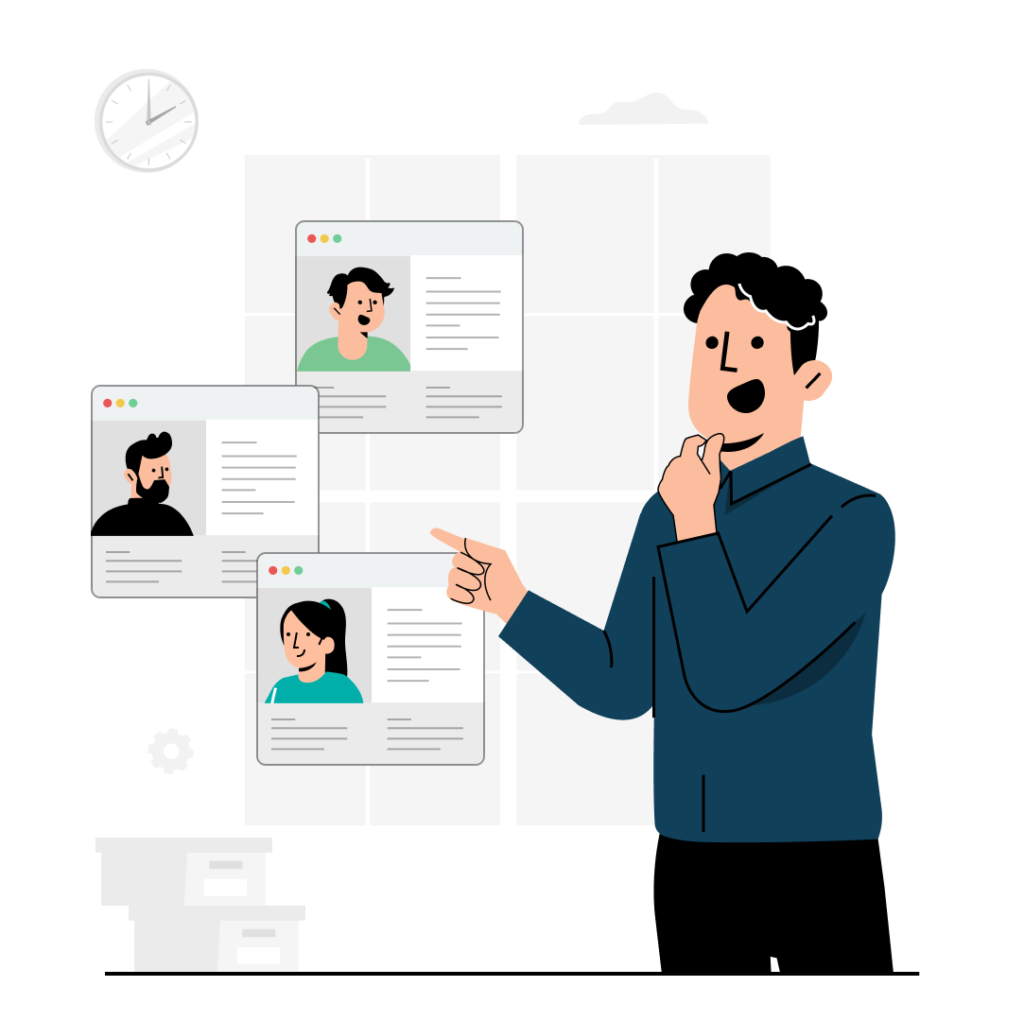You’re under constant pressure to optimise code performance. Yet companies like Stripe, Twilio, and AWS generate billions by deliberately limiting how fast their software runs. Rate limiting creates revenue, deliberate friction reduces support costs, and shipping slower software often delivers more profit than delayed perfect code.
The cost of premature optimisation includes developer time, code complexity, and delayed time to market. These costs usually exceed any savings from improved performance.
When you understand which situations call for strategic slowness versus when to optimise, you can allocate resources for maximum profitability rather than maximum speed. These performance paradoxes are part of the hidden economics of technical decisions that new CTOs must master.
What is premature optimisation and why does it reduce profitability?
Premature optimisation is improving code performance before identifying actual bottlenecks, costing you more in developer time and code complexity than it saves in infrastructure expenses. This practice increases maintenance costs, delays feature releases, and creates technical debt that compounds over time—directly reducing profitability by misallocating expensive engineering resources toward unproven performance gains.
Donald Knuth warned “we should forget about small efficiencies, say about 97% of the time: premature optimization is the root of all evil”. Programmers spend far too much time worrying about efficiency in the wrong places and at the wrong times.
Developers spend approximately 13.5 hours weekly on tech debt and another 4 hours on poor code quality. When you allocate nearly half your developer time to tech debt, you’re not shipping customer-facing features.
Hand-optimized code is generally harder to read and maintain, relying on clever tricks that future team members struggle to understand. Developers waste days rewriting functions that already worked, creating meticulously micro-optimized pieces of code that never even appeared in a CPU profile.
Optimizing code is hard and sometimes dangerous. It’s not something you undertake lightly. It requires your most skilled programmers. More computing sins are committed in the name of efficiency (without necessarily achieving it) than for any other single reason.
The rules of optimisation are simple: Rule 1: Don’t do it. Rule 2 (for experts only): Don’t do it yet.
Many companies throw cheap, faster hardware at the performance problem first before optimising code. It’s easier to make a fun game fast than it is to make a fast game fun. This applies to your product too—ship something users love, then optimise if you need to.
How does rate limiting function as a profitable business model?
Rate limiting generates revenue by creating artificial performance constraints that tier access to services, allowing companies like Stripe, Twilio, and AWS to charge premium prices for higher request volumes whilst reducing infrastructure costs through controlled resource consumption. This deliberately slow-by-design approach turns performance limitations into a monetisation strategy that generates billions in annual recurring revenue.
API monetization models are needed for sustaining API-driven business initiatives. Pricing can be tiered based on usage limits, features, or the level of support offered.
Average revenue per user (ARPU) and customer lifetime value (LTV) are key growth metrics for tiered pricing. Conversion rate from free to paid tiers and upgrade rate between paid tiers are the metrics that matter.
A common approach is to price each tier at roughly 2-3x the previous tier. Usage-based pricing is particularly appealing to businesses that have fluctuating API usage needs, allowing them to pay for what they use.
The free tier strategy works well. Free tier offers enough value to showcase capabilities while creating upgrade incentives. Google Maps Platform provides a $200 monthly credit, letting developers do meaningful work while preventing abuse through credit card verification.
Companies track API calls in real-time without adding latency. Some implement gradual rate limiting that slows rather than blocks excessive requests. The most effective approaches create 3-5 tiers with clear value differentiation.
When does deliberate friction improve business outcomes?
Deliberate friction—intentional slowdowns like confirmation dialogues, cooling-off periods, or multi-step processes—improves profitability by reducing costly user errors, preventing system abuse, and increasing customer satisfaction through more thoughtful decisions. Companies implementing strategic friction report lower refund rates, reduced support costs, and higher customer lifetime value despite slower user flows.
Friction refers to any element that slows down or complicates a user’s journey, but when used strategically can be a powerful tool. The most common use of friction in product design is to make it hard to do something by mistake, especially for nonreversible actions.
Friction can encourage users to think before they act for actions that require commitment or have long-term implications. When users invest a little effort into a process, they often perceive the outcome as more valuable.
A simple confirmation step can prevent an irreversible and serious action. A multi-step checkout process, even if it feels a bit longer, can make users feel more confident about their purchase. Netflix makes sure you understand how cancellation works before you click that button.
Studies find that people value self-built products disproportionately high—the IKEA effect. When experience is too frictionless, it can lead to hasty decisions, lack of engagement, increased errors, and reduced perceived value.
The key is to use it strategically by understanding the user’s goal, the potential consequences, and the user’s mental model.
How do you calculate whether optimisation delivers positive ROI?
Calculate optimisation ROI by comparing total development costs (engineer hours × hourly rate + opportunity cost of delayed features) against quantifiable benefits (server cost savings + revenue from improved performance + customer retention value). If optimisation costs exceed benefits or if shipping new features would generate more revenue, optimisation delivers negative ROI and resources should be allocated elsewhere.
The engineering ROI formula is: (Benefits – Costs) / Costs × 100. Cost components include developer time (fully loaded cost), code review, testing, deployment, and maintenance. Benefit components include server cost reduction, revenue impact from faster pages, and customer retention.
Calculate fully loaded developer cost per hour (typically £75-150+) versus monthly server savings. If optimization requires more hours than months of server savings at developer hourly rates, prioritize developer productivity by shipping features instead.
Writing code is maybe 20% of what developers do—the other 80% is understanding existing code, debugging, figuring out system connections, and waiting for other people. Developer time spent on optimisation includes the entire context-switching and coordination overhead.
Estimate revenue potential of delayed features using historical data or customer feedback. Compare feature revenue projections against optimisation benefits to quantify opportunity cost.
Time-to-Market Factor calculations include Revenue Acceleration (Weekly revenue × weeks accelerated) and Competitive Positioning (Market share percentage × total market value).
What is strategic slowness and when should you choose it?
Strategic slowness is the deliberate decision to ship software with acceptable performance rather than optimising for maximum speed, chosen when optimisation costs exceed business value or when slowness provides competitive advantages like faster time to market, lower development costs, or revenue-generating rate limits. This approach prioritises profitability over performance by allocating resources to revenue-driving activities instead of premature optimisation. Understanding developer velocity and optimisation opportunity costs is crucial to this decision.
Projects that accelerate time-to-market for revenue-generating features deliver compounding returns, with each week of accelerated delivery representing a competitive advantage.
Amazon prioritized shipping features over performance optimization in its early platform days. The AWS team spent virtually 18 months of engineers not writing code, instead deeply understanding user needs before building anything.
When Amazon launched S3, it was remarkably cheaper than anything else available to startups. Similarly, at 10 cents an hour, EC2 was an easy, relatively inexpensive way to scale up computers to run “web-scale” applications.
Jeff Bezos’s observation that “Customers are beautifully, wonderfully, dissatisfied” reminds us that perfect performance isn’t the goal—solving customer problems is.
Companies often put off low-level nitty-gritty optimizations that lock assumptions into code until as late as possible. The approach is to move quickly exploring your product’s design space without leaving a mess behind you.
How does code complexity from optimisation impact long-term profitability?
Optimised code often introduces complexity through abstractions, caching layers, and edge-case handling that slows future development, increases bug rates, and raises onboarding costs—creating long-term profitability drags that exceed short-term performance gains. This complexity tax compounds over time as each new feature must navigate optimised systems, reducing developer velocity and increasing maintenance overhead.
Code complexity (measured by cyclomatic complexity—the number of independent paths through code), test coverage, and performance benchmarks are technical health metrics. Data suggests that if current trends continue, defect remediation and refactoring may soon dominate developer workloads.
Duplicated code creates multiple problems: maintenance becomes harder, bugs multiply across cloned blocks, and testing becomes a logistical challenge. Academic research continually links co-changed code clones to higher defect rates.
One company reported that the number of bugs and system outages decreased by over 50% within the first six months of addressing technical debt. Developer turnover decreased and onboarding times shortened.
With a cleaner codebase, engineers in flow state are 2-5x more productive with fewer defects.
What metrics indicate when optimisation becomes necessary?
Optimise when measurable business impact occurs: user churn from slow performance, server costs exceeding 25% of revenue, or documented customer complaints about speed. Track response times, infrastructure spend as percentage of revenue, customer satisfaction scores, and conversion rates to identify when performance problems create actual profit loss rather than theoretical concerns.
Churn rate tracks when users stop engaging over a specific period. When you see increasing customer churn, growing support tickets about speed, rising infrastructure costs as percentage of revenue, or conversion rate drops correlated with performance metrics, those are the signals that matter.
Lead time tracks time from user story to request delivery. Change Failure Rate (CFR) measures percentage of deployments causing failures, with ideal rate under 15%.
Mean Time to Recover (MTTR) measures speed of service restoration after production failures. Metrics that actually matter are deployment frequency, lead time for changes, and mean time to recovery—these capture the system effects.
Top performing teams deploy multiple times per day while struggling teams ship once per month.
Most teams track lines of code, commit frequency, or story points—these metrics miss the real value. It’s like measuring a chef’s productivity by counting knife uses instead of customer satisfaction.
Studies show that optimized flow environments lead to 37% faster project completion and 42% reduction in technical debt. Recovery from flow state interruptions varies: simple bug fixes 10-15 minutes, feature implementation 15-25 minutes, architecture work 25-45 minutes. These interruption costs compound when you’re constantly context-switching between optimisation work and feature development.
What is the relationship between time to market and software performance?
Faster time to market typically generates more revenue than optimised performance because shipping first captures customers, validates product-market fit, and generates cash flow that funds future improvements. Companies that delay launches to optimise often lose market position to competitors who ship acceptable-quality software faster, then iterate based on real user feedback. These performance decisions and infrastructure trade-offs appear across all levels of technical choice, from UX patterns to system architecture.
Speed creates measurable financial value in competitive technology markets—early arrivals capture disproportionate returns. Each week of accelerated delivery can represent a competitive advantage in fast-moving markets.
How fast a company moves in transforming ideas into customer outcomes is the primary advantage of the company. Companies prioritizing rapid execution will ultimately outperform their slower competitors.
Time-to-Market Factor calculations include Revenue Acceleration (Weekly revenue × weeks accelerated for direct top-line impact) and Competitive Positioning (Market share percentage × total market value for strategic advantage). Customer Acquisition through earlier conversion × customer lifetime value delivers long-term revenue impact.
Feedback Cycle Improvement saves development cycles × cycle cost, accelerating product-market fit.
The challenge with many deployments isn’t that making changes is difficult—the system isn’t set up well and developers waste time on things other than solving problems. When every deployment becomes a mess, teams postpone shipping features because the pain isn’t worth it.
FAQ Section
Is it acceptable to ship software that performs slowly if it means releasing faster?
Yes, when performance is “good enough” for core use cases and optimisation would significantly delay launch—ship first, then optimise based on actual user behaviour and bottlenecks rather than assumptions. Prioritise time to market unless you have evidence that slow performance will directly prevent customer acquisition.
How do I explain to stakeholders why we’re not optimising slow code?
Present optimisation frameworks and premature optimisation decision criteria showing optimisation costs exceed benefits, demonstrate that current performance meets user needs with metrics, and show how resources allocated to features generate more revenue than performance improvements. Use data on customer satisfaction, churn rates, and support tickets to prove performance is acceptable.
What are the warning signs that strategic slowness has become a genuine problem?
Increasing customer churn, growing support tickets about speed, rising infrastructure costs as percentage of revenue, or conversion rate drops correlated with performance metrics. These indicators justify optimisation investment.
Can rate limiting work for products other than APIs?
Yes—any software with constrained resources can use rate limiting for tiered pricing: storage quotas, processing limits, export frequencies, feature access based on usage levels. The key is creating meaningful value differentiation between tiers.
How do I balance developer productivity against server cost optimisation?
Use the fully loaded developer cost calculation described earlier (typically £75-150+ per hour) compared against monthly server savings. If optimisation requires more hours than months of server savings at developer hourly rates, prioritise developer productivity by shipping features instead.
When does code complexity from optimisation justify the maintenance burden?
When documented performance problems directly impact revenue and optimisation provides measurable improvement that exceeds ongoing maintenance costs. Example: 100ms latency reduction worth £50k monthly revenue justifies £10k annual maintenance increase.
What’s the difference between strategic slowness and technical debt?
Strategic slowness is a deliberate business decision to maintain acceptable performance, whilst technical debt is unintentional quality erosion requiring future remediation. Strategic slowness has defined monitoring and escalation criteria; technical debt doesn’t.
How do I calculate opportunity cost of optimisation work?
Estimate revenue potential of delayed features using historical data, market research, or customer feedback. Compare feature revenue projections against optimisation benefits (server savings + performance-driven revenue) to quantify opportunity cost.
Should startups prioritise optimisation or feature development?
Startups should prioritise feature development and product-market fit until performance directly prevents customer acquisition or retention. Premature optimisation drains limited resources before validating business model and customer needs.
What performance thresholds trigger immediate optimisation regardless of ROI?
Security vulnerabilities, regulatory compliance failures, or complete service outages justify immediate optimisation regardless of cost. For other scenarios, use ROI analysis and business impact metrics to prioritise.
How does deliberate friction reduce customer support costs?
Friction mechanisms like confirmations, cooling periods, and multi-step processes prevent user errors, impulsive actions, and misunderstandings that generate support tickets. Reduced ticket volume directly lowers support staff costs and improves customer satisfaction.
Can you provide examples of companies profiting from strategic slowness?
AWS, Stripe, and Twilio generate billions from rate-limited tiered pricing. Amazon’s early platform prioritised shipping features over performance optimisation. Many SaaS products use storage/processing limits as business model components rather than optimising for unlimited performance.
Understanding when to embrace strategic slowness versus when to optimise is just one of many counterintuitive technical choices that impact profitability. For a comprehensive overview of similar patterns and frameworks for evaluating them, see the hidden economics of technical decisions.












